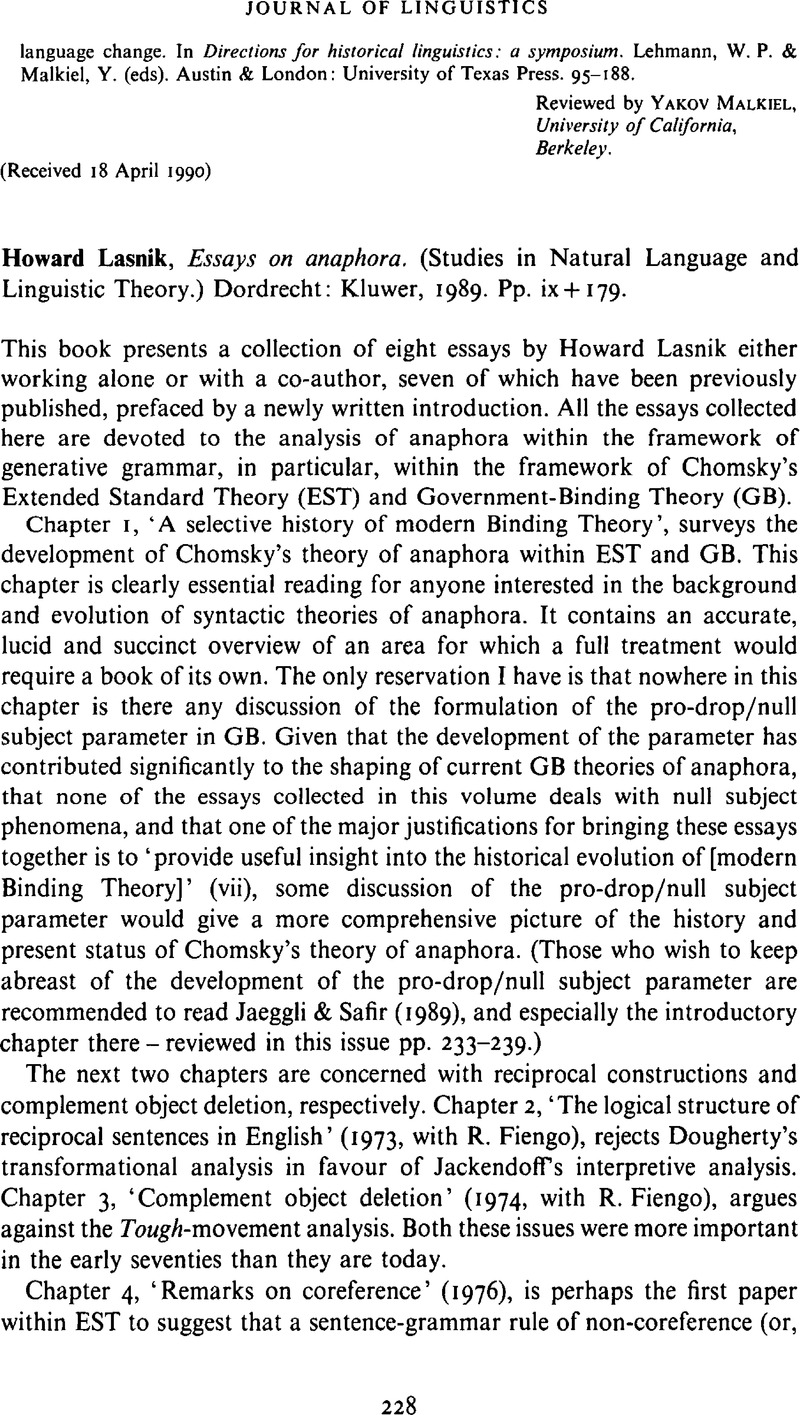Crossref Citations
This article has been cited by the following publications. This list is generated based on data provided by Crossref.
Huang, Yan
1991.
A neo-Gricean pragmatic theory of anaphora.
Journal of Linguistics,
Vol. 27,
Issue. 2,
p.
301.





